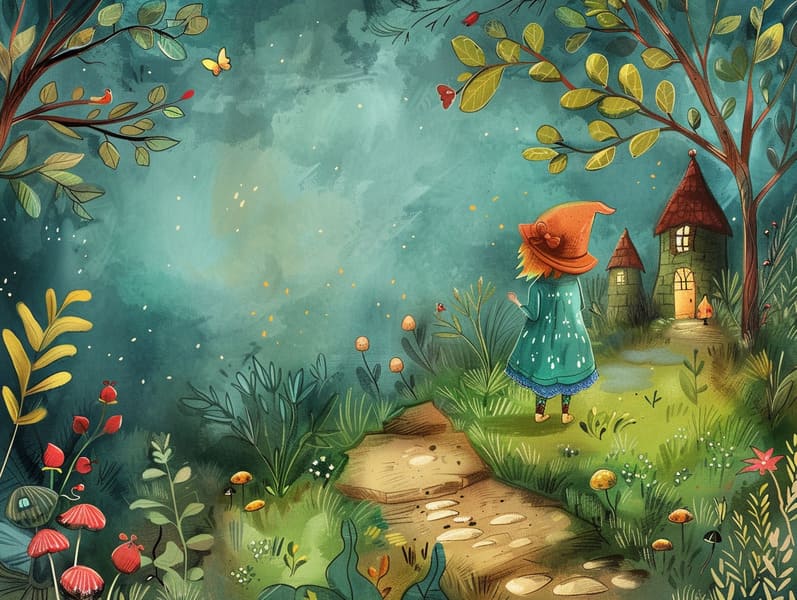
Famous fairy tales have historical significance. These stories have been transmitted from one generation to the next long before they were ever inscribed. They came from a variety of civilizations, including Western traditions. They were initially shared among older generations, often carrying themes and messages reflective of the societal norms and beliefs of the time.
Jacob and Wilhelm Grimm, Jacob and Wilhelm Grimm, were among the first to compile and publish many of these beloved tales. Their published works, "Grimm's Fairy Tales," included stories like "The Story of Cinderella," "The Bread Crumb Trail," and "Little Snow White," which have since become pillars in the world of timeless fairy tales. Similarly, Hans Andersen's enchanting stories, such as "The Mermaid's Tale," and "The Little Duckling," have enchanted hearts worldwide, guaranteeing their place in the pantheon of classic fairy tales.
Despite their historical roots, these tales remain as pertinent as ever, especially as nighttime stories for kids. These fantastical tales are now available in various formats, including vibrantly illustrated books, enchanting animations, and free fairy tales online.
Their unwavering allure can be connected to several charming aspects:
Valuable Lessons: Old fairy tales often convey important moral lessons. Tales like "The Story of the Boy Who Cried Wolf" teach the benefit of honesty, while "The Tale of the Tortoise and the Hare" show the traits of steadfastness and meekness. These stories offer children clear distinctions between virtue and vice, building their moral compass in a soft yet important way.
Empathy and Awareness: Old fairy tales frequently include personalities facing challenges and struggles, provoking readers to relate with their struggles and cheer for their triumphs. For instance, "The Tale of Beauty and the Beast" conveys the merit of seeing inner beauty to realize the true essence of a soul, advancing empathy and awareness.
Cultural Comprehension: Many timeless fairy tales are deeply ingrained in the cultural contexts from which they sprang. Engaging with these narratives can provide enlightening views into different beliefs, enhancing a sense of cultural insight and knowledge.
Imagination and Creativity: The whimsical elements in fairy tales—talking animals—awaken children’s innovations. These fairy tales lead readers to otherworldly realms, generating creative ideas and a sense of mystery that persists a lifetime.
Traditional fairy tales are not only delightful but also educational. They act as whimsical tools in strengthening various mental and emotional abilities in children. When traditional fairy tales are spoken out loud, they promote verbal development by teaching new language and detailed sentence structures. This practice also develops auditory perception and attentiveness, as young ones remain attentive, looking forward to see what happens next.
Furthermore, deliberating the themes and characters of classic fairy tales can sharpen intellectual skills and logical thinking. Little ones learn to find patterns, forecast, and figure out cause and effect. These conversations also help the young say their thoughts and feelings, enhancing their emotional intelligence.
In today’s digital age, the existence of internet fairy tales has made these stories more reachable than ever. Internet resources and apps present ample collections of Grimm's fairy tales that can be accessed or listened via anytime, anywhere. Fairy tales read out loud are particularly common, sharing an fascinating method for kids to experience these entrancing tales. Spoken stories and read-aloud videos guide characters and settings to life, often accompanied by spellbinding music original fairy tales for bedtime and harmonies that improve the story adventure.
The everlasting appeal of classic fairy tales lies in their ability to transform to modern times while retaining their core messages. Contemporary updates of these stories often incorporate more inclusive characters and modern settings, making them relatable to today’s audience. However, the core values of guts, understanding, and lawfulness remain unchanged, continuing to impact readers of all ages.
Traditional fairy tales also offer a sense of solace and familiarity. They give a coherent narrative with a evident beginning, middle, and end, often drawing to a close with the culmination of conflicts and the triumph of right over wrong. This constancy can be relieving for young readers, sharing a sense of consistency in an unstable world.
Old fairy tales continue to mesmerize and enlighten new generations, maintaining their appeal and relevance in modern society. As nighttime stories for kids, they grant a perfect blend of delight and instruction, promoting moral values, empathy, and creativity. The abundance of online storybooks and the favor of fairy tales read out loud secure that these traditional narratives remain accessible to new generations.
By retaining and passing on these narratives, we continue to recognize the rich tapestry of fantasy and cultural heritage. Whether you are reading a colorful picture book, perusing a web-based collection, or listening through an narrated book, the elegance of classic fairy tales is always within reach. These stories point out of the continued strength of storytelling and its ability to gather us across epochs and places.
Regardless if you are reading a richly illustrated book, exploring a internet library, or listening on an read-aloud book, the allure of classic fairy tales is always within reach.
These fairy tales demonstrate of the endless magic of narratives and its ability to link us across time and space, forging a link that delights and instructs alike.